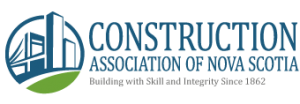Dear Supplier,
In October 2014, I emailed suppliers, including you, seeking ideas on how our government can improve federal procurement. After reviewing all of the comments and suggestions, it is clear that there is a lot of work needed in order to simplify how the federal government buys goods and services.
In response to your suggestions, I am pleased to inform you that I have instructed the Department to make several changes to Public Works and Government Services Canada (PWGSC) processes and technology to improve federal procurement. Specifically, here are some of the changes that PWGSC has started to make or will be implementing in the coming months:
1.Many suppliers told us that bids should not be rejected for small administrative errors that are not relevant to the substance of the bid.
Action: Starting this fall, PWGSC plans to implement a new flexible bid compliance process so that bids will no longer be rejected for minor administrative errors or omissions.
2.Several respondents told us that contract solicitation documents are too varied and complex, particularly for low-value contracts.
Action: This fall, PWGSC will start testing a simplified and standardized bid solicitation format that will reduce the costs and administrative burden on suppliers.
3.A number of businesses provided suggestions on how we can improve the popular Build in Canada Innovation Program.
Action: This summer, we are implementing significant changes to the Program. Most importantly, we are taking steps to reduce the time it takes to match innovations with government departments and sign a contract. We are also moving the Program to a continuous intake process that will allow Canadian innovators to submit their bids as soon as their innovations are ready. Furthermore, we are making a change that will facilitate additional sales of innovations to Government after the initial Build in Canada Innovation Program test.
4.Many suppliers commented about the need to improve the Government’s tender website, Buyandsell.gc.ca, to make it a more effective tool for suppliers.
Action: We are taking several steps to make the website easier to find and to track procurement opportunities. This includes a new feature available as of July 1, 2015, that allows companies to add their names to a list of interested suppliers for tender notices. Also, the site now allows suppliers to subscribe to email notices for tender amendments and related updates.
5.Respondents told us that we need to modernize our procurement technology and that we should allow for electronic bidding.
Action: PWGSC has launched a competitive process to acquire and implement a modern e-procurement system that will allow for secure electronic bidding.
These are only some of the changes that PWGSC will be implementing in response to your suggestions. For example, based on your concerns, we are looking at changes to simplify and improve the effectiveness of standing offers and supply arrangements. As we move forward with these measures, we will continue to seek your advice on how we can ensure that our procurement system better serves suppliers. We will also inform you of these changes.
Thank you for taking the time to share your ideas with me. Our Government’s commitment to creating jobs, growth and long-term prosperity means that we will continue to work with you and make it easier for businesses like yours to access federal procurement opportunities. Thank you again for your participation.
Sincerely,
Diane Finley, PC, MP, Minister of Public Works and Government Services
